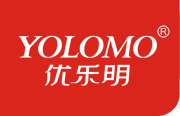Before choosing a desk lamp, understand China's national standards. Any desk lamp on the market that claims to be "eye-protective," "comfortable," or "suitable for studying and working" must meet the performance parameters within the GB/T 9473 standard. It must meet the performance requirements specified in the standard; otherwise, it is false advertising.
The performance parameters mentioned here mainly include illuminance intensity uniformity, light shielding, color temperature, and retinal blue light hazard. If you want to further understand the specific content of the standard, you can refer to the relevant materials provided below. Next, we will understand from these dimensions what qualities a qualified eye-protective desk lamp should possess.
Ps: (National Standard GB/T 9473-2017 "Performance Requirements for Reading and Writing Desk Lamps" was formulated by the national-level Shanghai Product Quality Supervision and Inspection Institute, approved for release on September 30, 2017, and officially implemented on April 1, 2018, replacing the original GB/T 9473-2008 standard.)
I. Illuminance Intensity and Uniformity
First, let's clarify what illuminance is. Sufficient illuminance ensures that the eyes have good recognition of the target. Simply put, the brightness should be appropriate, neither too dark nor too bright. This seems difficult to grasp accurately! You can use the brightness of natural light around 10 am as a reference.
In any case, ensuring that our eyes can see things without strain under this light source is sufficient. By "without strain," we mean that the eyes do not need to significantly adjust the pupil muscles to see clearly.
Friends who play with cameras should understand that when the light is dim, to ensure correct exposure, without changing the time, you need to open the aperture to increase the amount of light, and vice versa, reduce the aperture to reduce the amount of light. The eyes are similar to cameras, relying on adjusting the size of the pupil to achieve the camera's "adjusting the aperture" to increase or decrease the amount of light.
Of course, just having enough light is not enough; you also need to consider whether the lighting is uniform. If the lighting is uneven, it will cause the eyes to constantly adjust themselves in areas of different brightness, quickly leading to fatigue and discomfort in a short time. Therefore, illuminance intensity and uniformity are two important indicators of visual comfort. If you want to be precise about the specific standards and regulations, please refer to the following four points:
The illuminance and uniformity of the lamp in the central and edge areas of the reading and writing area must reach at least Class A, and preferably Class AA;
Class A requires the central area illuminance to be at least 300 lx and the edge area to be 150 lx;
Class AA requires the central area illuminance to be at least 500 lx and the edge area to be 250 lx;
The uniformity (ratio of maximum to minimum values) of illuminance for both Class A and Class AA should not exceed 3.
(lx is the international unit of illuminance, an abbreviation of lux, and its physical meaning is the luminous flux incident on a unit area.)
II. Light Shielding
Light shielding can be understood literally. For example, when using a desk lamp, if you are tired of one posture and stretch or move your neck, your gaze will inevitably touch the outer lampshade. If the lampshade is not light-transmitting, the resulting brightness contrast will make your eyes uncomfortable; if the lampshade is too light-transmitting, its brightness is far greater than the brightness of the paper, which will also make your eyes uncomfortable. Therefore, appropriate light transmission can make our eyes more comfortable.
Therefore, a comfortable desk lamp must have a certain degree of light shielding. When in a working sitting posture, the brightness of the luminous components visible when looking up should not exceed 2000 cd per square meter. Only then can it be considered to have the light shielding properties of a qualified eye-protective desk lamp.
(cd is the international unit of luminous intensity, an abbreviation of candela, and its physical meaning is the amount of luminous flux passing through a certain solid angle in a certain direction of the light source.)
III. Color Temperature
Regarding color temperature, I think everyone is familiar with "warm light" and "cold light." The color temperature of the light source determines the color of the light and gives us different feelings. When the color temperature is <3000K, the light color is reddish-white, giving a warm feeling; when the color temperature is between 3000K and 5000K, the light color is white, and people feel naturally comfortable; when the color temperature is >5000K, the light color is bluish-white, giving a refreshing feeling.
(K is the international unit of color temperature, an abbreviation of Kelvins, and its physical meaning is that the spectral composition of the light emitted by a heated black body is the color temperature at the current temperature.)
However, in actual use, the color temperature should not exceed 4000K. Especially at night, a higher color temperature will produce more blue light spectrum. We will discuss the specific harm of blue light in the next section. In relevant standards, if the color temperature of the LED light source used is higher than 4000K, the product's instructions must indicate that nighttime use should be avoided. If it has a color temperature adjustment function, it should also clearly instruct users to adjust the color temperature to below 4000K for nighttime use.








